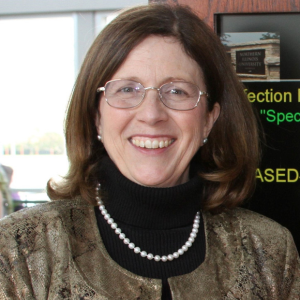MDS 3.0 Section M: Skin Conditions
When MDS 3.0 went into effect in October 2010, Section M: Skin Conditions was immediately perceived as a special challenge. It was not simply that the section expanded from approximately two-thirds of a page in MDS Version 2.0 to three full pages in MDS Version 3.0. The type of data required in the new version is rigorous and complex.
Several old problems from MDS Versions 1.0 and 2.0 have been addressed and corrected in Version 3.0 (e.g., no “reverse” or back staging; no more “stasis” ulcers). All in all, the new MDS 3.0 Section M is an improvement over the older versions-but it requires adaptation and, in some cases, improved clinical infrastructure to tackle. It’s not just about more boxes to be filled in. The details of eight specific challenges posed by MDS 3.0 Section M are addressed.
CHALLENGE 1: THE quantity OF WOUND DATA REQUIRED
The sheer volume of detailed data now required to complete Section M means that the time required for the MDS Nurse/RNAC or wound team nurse to complete this section will increase exponentially (i.e., at least threefold). This may require increased resources as well as more communication between the MDS team and the wound team.
It is almost implied that a facility has a dedicated wound nurse or team who is tracking and recording this detailed data consistently and accurately. This is an extraordinary level of precision being required.
CHALLENGE 2: CONCEPTUAL CHANGES
Several important concepts have been changed from Versions 1.0 and 2.0 to Version 3.0. At last, “reverse” or back staging of pressure ulcers is no longer required. But facilities that had built reverse staging into their assessment and documentation systems for MDS purposes must now undo it and base their pressure ulcer reporting on “the highest stage of existing ulcer(s) at its worst.” This might require revision of wound documentation forms and wound policies/procedures/guidelines.
Some wound etiologies have been updated (e.g., “stasis ulcers” has been replaced by “venous ulcers”) while other etiologies have been streamlined (e.g., Foot Problems and Other Problems). These new categories may require new iterations of a facility wound documentation form. Note that modified 2007 NPUAP staging definitions are used for pressure ulcer staging. (Compare the MDS 3.0 staging definitions with those listed on the NPUAP Web site, www.npuap.org).
CHALLENGE 3: IDENTIFYING UNDERLYING WOUND ETIOLOGIES ON ADMISSION
Section M of MDS 3.0 requires a new level of sophistication when it comes to identifying underlying wound etiologies. The person who provides the data for the form must be able to accurately distinguish between pressure ulcers and:
arterial ulcers
venous ulcers
foot problems
diabetic foot ulcers
other open lesion(s) on the foot
surgical wounds
burns
other
Ideally, the admitting physician has addressed these distinctions for each wound present in the Admission H&P (history and physical) or readmission note or it has been documented in the transfer records.
CHALLENGE 4: IDENTIFYING WOUND ETIOLOGIES FOR NEW WOUNDS
If wounds develop in a facility after admission or readmission, their etiologies must be carefully identified. This is a practice that may require physician or registered nurse competency, depending upon your state practice act. LPNs in particular must be cautious about assessing wound etiologies as this activity might fall outside their scope of practice. Ideally, an interprofessional team approach is used to identify the type of wound, the plan of care, interventions, and outcome measures.
CHALLENGE 5: THE DEVIL’S IN THE DETAILS
The data needed to complete Section M requires that pressure ulcers are assessed at least weekly and that the dimensions are being recorded in such a way that they can be compared week to week. It is almost implied that a facility has a dedicated wound nurse or team who is tracking and recording this detailed data consistently and accurately. This is an extraordinary level of precision being required.
Note that the way measurements are taken has now been defined and prescribed on MDS 3.0. Those facilities that were measuring length as the longest dimension of the wound need to change their technique. MDS 3.0 defines “length” as the longest length from head to toe. “Width” is defined as the widest width side-to-side perpendicular (90-degree angle) to length.
CHALLENGE 6: CONSISTENCY AND QUALITY OF DATA
The old adage “garbage in, garbage out” certainly applies to the new Section M. The consistency and quality of the data collected by the staff will determine the accuracy of the data entered on the MDS. All staff members who are monitoring and assessing wounds must be trained to be consistent in their determinations of the following:
Pressure ulcer risk determinations (a consistent tool should be used, one that is valid and reliable, such as the Braden Scale or the Norton Scale)
Pressure ulcer staging (NPUAP 2007 staging or EPUAP/NPUAP International Guideline Staging 2009) should be followed
Pressure ulcer dimensions and tissue types
Other ulcers, wounds, and skin problem etiologies
CHALLENGE 7: M1200 SKIN AND ULCER TREATMENTS
Tucked away at the very end of Section M is M1200 titled “Skin and Ulcer Treatments.” This is a most important area to complete, because it is the only area where interventions are documented and it is this documentation that ensures the facility is meeting the standard of care for skin and wound care. The 10 check-off boxes cover major clinical skin and wound interventions in very general, catchall categories such as ulcer care, surgical wound care, etc.
Remember that your monitoring, assessments, interventions, outcomes, and documentation must meet a broader standard of care for skin and wound care.
Note that for residents with complex wounds and pressure ulcers typically five to nine of the boxes in M1200 will be checked off. There will rarely be a resident in a long-term care facility for whom “Z. None of the above was provided” is checked. Also note that “C. Turning/Repositioning program” refers to an individualized program, not simply routine q2h [every two hours] turning of every resident.
CHALLENGE 8: JUST BECAUSE IT’S NOT IN SECTION M DOESN’T MEAN YOU DON’T DO IT
Section M is not a comprehensive reflection of skin conditions; it focuses on selected data points that are of particular interest to CMS. Section M does not reflect the comprehensive skin and wound care requirements that need to be followed if a facility is to meet the standard of care for skin conditions. Remember that your monitoring, assessments, interventions, outcomes, and documentation must meet a broader standard of care for skin and wound care. For example, you will need to have guidelines that address incontinence-associated dermatitis, skin tears, abrasions, bruises, etc.-none of which are reflected in Section M of MDS 3.0.
In conclusion, the challenges posed by the new Section M of MDS 3.0 will strengthen the skin and wound care services provided by every long-term care facility in the United States and will stimulate providers to optimize the skin and wound care services that our residents receive. LTL
Diane L. Krasner, PhD, RN, CWCN, CWS, MAPWCA, FAAN, a wound and skin care consultant is the WOCN/Special Projects Nurse at Rest Haven-York, a 158-bed facility in York, Pennsylvania. Dr. Krasner is the lead co-editor of
Chronic Wound Care: A Clinical Source Book for Healthcare Professionals (4th edition,
www.chronicwoundcarebook.com), the clinical editor of Wound Source (
www.woundsource.com), and serves as an expert witness in legal cases involving wound care. Long-Term Living 2011 February;60(2):24-27
I Advance Senior Care is the industry-leading source for practical, in-depth, business-building, and resident care information for owners, executives, administrators, and directors of nursing at assisted living communities, skilled nursing facilities, post-acute facilities, and continuing care retirement communities. The I Advance Senior Care editorial team and industry experts provide market analysis, strategic direction, policy commentary, clinical best-practices, business management, and technology breakthroughs.
I Advance Senior Care is part of the Institute for the Advancement of Senior Care and published by Plain-English Health Care.
Related Articles
Topics: Articles , Clinical , MDS/RAI











